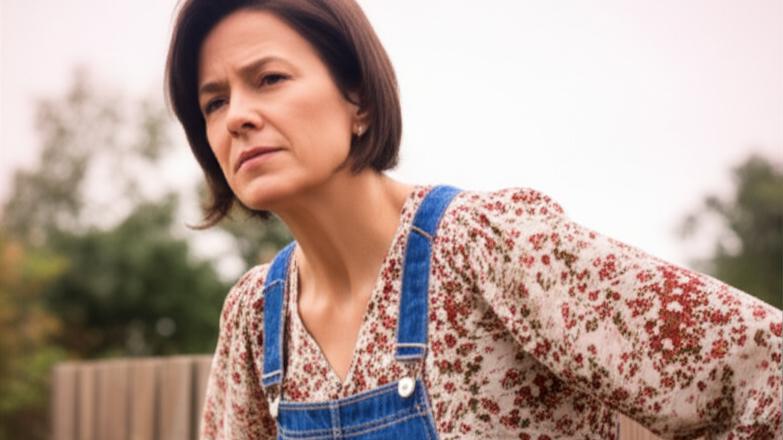It was a sunny weekend morning, and I was at the local farmer’s market catching up with Emily, an old friend and an avid gardener. She was beaming about her new garden project but winced as she shifted her weight from one leg to the other.
“Are you okay, Emily?” I asked with concern.
She sighed, rubbing her hip. “It’s my hip again. Every time I go for a long walk or spend hours bending in the garden, the pain flares up. I even struggle to sleep at night because lying on my side hurts.”
Based on her description, I immediately suspected trochanteric bursitis, a common cause of outer hip pain, particularly in middle-aged women like Emily.
What Is Trochanteric Bursitis and Tendonitis?
Trochanteric bursitis is an inflammation of the bursa, a fluid-filled sac that acts as a cushion between bones and tendons near the greater trochanter, the prominent bone on the outer side of the hip. Tendonitis, on the other hand, refers to inflammation of the tendons that attach the muscles to this bone. These two conditions often occur together and are now more accurately referred to as Greater Trochanteric Pain Syndrome (GTPS), which encompasses both bursitis and tendonitis.
Who Gets Trochanteric Bursitis?
While it can occur in both young and elderly individuals, middle-aged women are most commonly affected, especially those who have recently taken up activities like jogging, walking, or gardening.
Research shows that women aged 45 to 65 are more prone to this condition due to hormonal changes affecting tendon elasticity and bone structure. A study published in the Journal of Orthopaedic Research highlighted that hormonal fluctuations during menopause can make tendons more susceptible to inflammation.
What Are the Symptoms?
The classic signs of trochanteric bursitis include:
- Pain on the outer side of the hip that can radiate down the leg to the foot.
- Night pain when lying on the affected hip.
- Limping due to discomfort when walking.
- Persistent pain that worsens with activity.
- In more severe cases, individuals may experience swelling and tenderness over the hip.
What Causes Trochanteric Bursitis?
The most common cause is friction or overuse of the bursa and tendons. This can result from:
- Excessive walking or running, especially on uneven surfaces.
- Poor posture or gait habits, such as walking with an intoeing gait (pigeon-toed).
- Prolonged standing or bending without proper knee flexion.
- Obesity, which increases pressure on the hip joint.
Interestingly, a 2022 study from The British Journal of Sports Medicine found that people with poor gluteal muscle strength are at a higher risk of developing this condition.
How Can Trochanteric Bursitis Be Diagnosed?
When Emily came to my clinic for a thorough check-up, I conducted a physical examination to pinpoint the tender spots around her hip. To confirm the diagnosis, I recommended an ultrasound scan, which is a reliable, non-invasive way to detect inflammation of the bursa and tendons. In more complex cases, doctors might order an MRI or X-ray to rule out other conditions like osteoarthritis.
What Are the Treatment Options?
Managing trochanteric bursitis involves a combination of self-help measures, medical treatments, and lifestyle modifications.
| Treatment Type | Examples and Recommendations |
|---|---|
| Self-Help and Physical Therapy | |
| Rest and Modification | Avoid aggravating activities. Modify your gait (try an out-toeing walk). Avoid sleeping on the affected side. |
| Pain Relief | Apply an ice pack. Use over-the-counter analgesics like paracetamol or ibuprofen. Try self-massage with an analgesic cream. |
| Strengthening Exercises | Perform exercises like the Knee-to-Chest Stretch and Side-Leg Raises to strengthen gluteal muscles. |
| Medical Treatment (for severe cases) | |
| Injections | A local cortisone injection can reduce inflammation and provide long-term relief. |
| Surgery | In rare cases, surgical removal of the bursa or tendon repair might be necessary. |
Emily’s Outcome
After a few weeks of consistent exercises, ice therapy, and modifying her activities, Emily reported a significant improvement in her symptoms. Learning to adjust posture and gait is key to enjoying daily activities without nagging pain.
Take-Home Message
- Rest and Modify: Avoid activities that cause pain and try adjusting your walking style (out-toeing).
- Strengthen Your Glutes: Regular, targeted exercises for the gluteal muscles are crucial for recovery and prevention.
- Manage Sleep: Avoid sleeping on the painful side. Use pillows for support.
- Reduce Inflammation: Use ice packs and over-the-counter pain relievers as needed.
- Seek Medical Help: If pain persists, a cortisone injection can be very effective.


